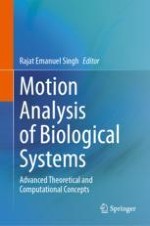2024 | OriginalPaper | Chapter
5. Hill-Type Model
Authors : Rajat Emanuel Singh, Gannon White, Kamran Iqbal
Published in: Motion Analysis of Biological Systems
Publisher: Springer International Publishing
Activate our intelligent search to find suitable subject content or patents.
Select sections of text to find matching patents with Artificial Intelligence. powered by
Select sections of text to find additional relevant content using AI-assisted search. powered by
